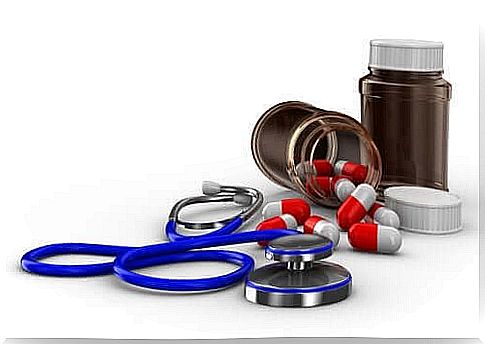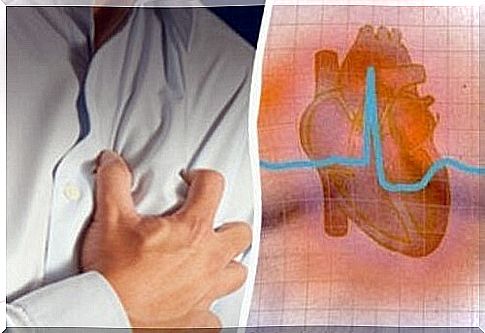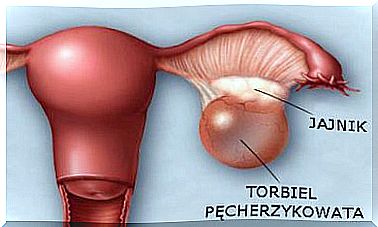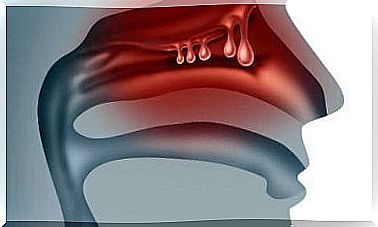Verapamil: Uses And Side Effects

Verapamil is a drug that can be administered orally and intravenously, according to the patient’s needs, in the treatment of mainly angina, high blood pressure and arrhythmias.
Verapamil belongs to the family of class IV antiarrhythmics and is more effective than digoxin in controlling atrial fibrillation. We do not forget that digoxin has a cardiotonic effect and is one of the most effective drugs.
While verapamil is a medicine for cardiovascular disease, it has other uses as well, such as treating mania and preventing migraines.
Various versions of this drug on the market are designed for one or the other use. We can treat angina with prolonged-release tablets or apply eye drops for ocular hypertension or glaucoma.
Verapamil and arrhythmias – what they are
Arrhythmia is an abnormality in the rhythm of the heartbeat. This rhythm may be slower or faster. In the first case, arrhythmias will be called bradycardia, and in the second, as tachycardia.

When this occurs, the contraction of the heart may be disrupted. As a consequence of this anomaly, conduction disturbances called extrasystoles, which are the most common arrhythmias in the general population , can develop.
On the other hand, let’s emphasize that arrhythmias are usually not very dangerous. However, some cases can be life-threatening, so it is very important to keep them under control.
There are 4 main types of arrhythmias:
- Premature ventricular contractions
- Supraventricular arrhythmias
- Ventricular arrhythmias
- Bradyarrhythmia
What is angina?
This disease, along with myocardial infarction, is a form of ischemic heart disease, that is, a disease caused by deterioration and obstruction of the arteries of the heart.
This situation is known as atherosclerosis and is caused by a build-up of cholesterol plaques, lipids, and inflammatory cells in the walls of these arteries. As a result, the heart does not receive enough blood to function properly.
Angina pectoris appears gradually as the arteries of the heart deteriorate over time. There are two types of this disease:
- Stable angina: pain occurs during exercise and can spread to other areas of the body.
- Unstable angina: pain occurs at rest and lasts longer than in stable angina.
How does verapamil affect the body?
This drug owes its effectiveness to its ability to block the voltage-dependent calcium channels. It acts on the entry of extracellular calcium through the membranes of the heart muscle cells. In contrast, plasma calcium levels are unchanged.
To this end, verapamil attaches to free calcium channels by modifying their structure. Thus, they cannot introduce calcium from the plasma into the cells of the heart muscle.

In addition, this drug also interferes with the release of intracellular calcium which is stored in the sarcoplasmic reticulum, a special cellular structure. By lowering the level of calcium in the cell, the heart muscle dilates, which affects the contraction mechanism. The same is true for the smooth muscles of blood vessels.
Thereby , the total peripheral vascular resistance is reduced and hence the secondary load. These mechanisms explain the beneficial effects of verapamil in angina and hypertension.
Side effects that verapamil may cause
The most serious side effects that may occur during treatment with verapamil:

- Sinus bradycardia
- Sinus tachycardia
- Atrioventricular blockade of varying degrees. You may need treatment with another medicine.
- Hypotension
Note that these undesirable effects are more common when verapamil is administered intravenously than with oral treatment.
In addition to these undesirable effects, the patient may also experience other serious consequences due to its vasodilating effects, such as:
- Dizziness
- Hot flushes
- Tiredness
- Headache
- Vomiting
- Abdominal pain
Finally, although this is very rare, some patients may develop hypersensitivity reactions.
Application
Verapamil is a drug used primarily in the treatment of angina, high blood pressure and various arrhythmias. It has quite dangerous side effects, so be especially careful during treatment. Therefore, you should always follow the doctor’s recommendations and consult any abnormal symptom or any doubts.









